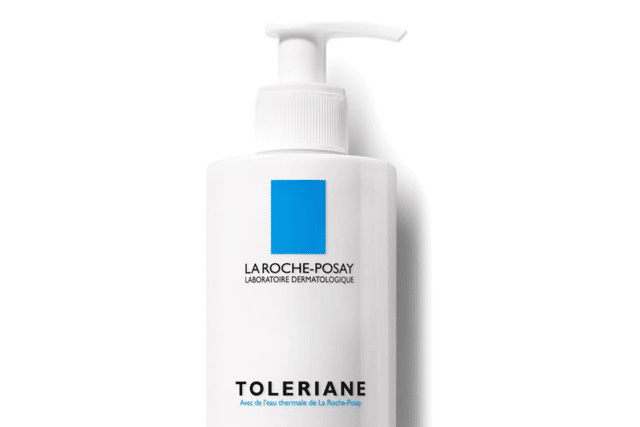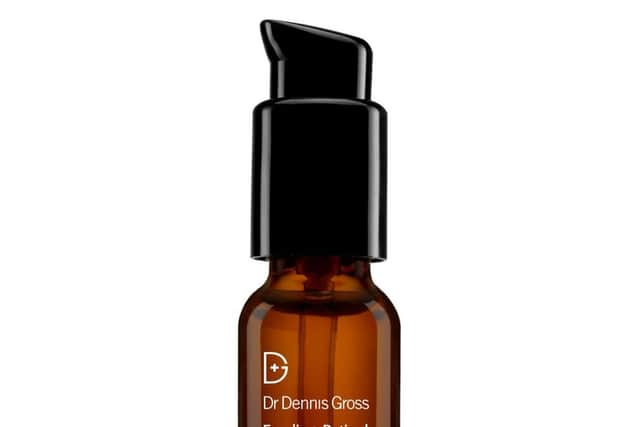How to get rid of dark circles under your eyes: prevention and tricks for covering-up tired looking eyes
This article contains affiliate links. We may earn a small commission on items purchased through this article, but that does not affect our editorial judgement.


It doesn't help that they get progressively worse as we age, or, indeed, when we are sleep deprived (insomnia is as much a part of pandemic life as daily walks and baking trends). You don't have to be especially vain to want to do away with them: no one particularly likes being told they look tired or run down, and dark circles are a dead giveaway.
Before we tackle how to get rid of them (or at the very least, hide them), time to learn a little about why we get them in the first place.
What causes dark circles?
The skin under the eye is much thinner than regular skin – making it more translucent and altogether more delicate. As such, we see the purplish-blue hue of our veins more easily through this thin under eye skin.
There are multiple causes for dark circles appearing, though. If you have poor circulation, the blood veins under the eyes dilate – making them bigger and darker. Hayfever and nasal congestion can exacerbate this, too.
Spending too long staring at screens prompts eyes strain – this, again, makes the blood vessels under the eye bigger and darker.
For some people, the cause is hyperpigmentation, which is prompted by a mixture of environmental factors, (too much sun, smoking, too little sleep), or genetics.
Behaviourally, being dehydrated, drinking alcohol the night before, and being fatigued will all make your eyes look shrunken, and darker underneath.
Notwithstanding the fact that for some people, hyperpigmentation is genetic, most of the causes of dark circles under eyes come from not sleeping enough, drinking too much booze, smoking, eating poorly, and not drinking enough water. All the usual culprits, then.
What can you do to minimise dark circles under the eyes?
As with so many things, living a cleaner, healthier lifestyle will help alleviate the appearance of dark circles.
- Getting plenty of exercise to help boost your circulation
- Sleeping well
- Eating a well-balanced diet, full of fresh fruits, vegetables, whole grains, lean proteins, and healthy fats
- Wear sunscreen
- Drink water
- Quit smoking (if you do)
Now, that's an intimidating list, and even if you can manage some of those things, current stressful circumstances don't lend themselves to an abstemious lifestyle. So what can you do that doesn't involve changing all of your (bad) habits?
We're going to heavily caveat this with the sad truth that skincare alone won't work miracles. It can certainly help, but don't expect sudden, radical change. You want to look instantly better rested? Use concealer. We'll advise you which ones below.
Be gentle with the area under the eyes
That delicate under-eye skin should be treated with kindness. Don't attack it with exfoliating scrubs. Use a gentle cleanser to avoid stressing the skin.
Tap the area under the eyes tenderly, like a lovers' caress, as you apply your cleanser, and pat softly with a towel – like a baby's bum – when you dry.


Toleriane Dermo-Cleanser (£18.50 for 400ml), by La Roche-Posay, is one of the finest pharmacy-brand gentle cleansers we've used.
If you can stretch to it, Skinceuticals Gentle Cleanser (£35 for 200ml) is a cosseting cleanser for sensitive skin.
Use an eye serum that plumps and brightens
And that means two ingredients: Vitamin C and hyaluronic acid. Vitamin C is clinically proven to make skin appear brighter, while hyaluronic acid helps the skin plump up. If you suffer from hyperpigmentation and crêpeyness , in addition to having dark circles, a smart serum will help smooth under-eye skin.


The gold standard here is Dr Dennis Gross's Ferulic (that's Vit C) and Retinol Eye Serum (£68 for 15ml), but it costs a pretty penny. It has a fairly instantly brightening effect, but, as with any skin care, you'll need to apply for at least four weeks consistently before you see real results. Absolutely worth it though – you will see a difference in dark circles.
On the more budget side of skin care, the Ordinary Caffeine Solution (£5.75 for 30ml) has won cult acclaim - for good cause. The 5 per cent caffeine concentration will help constrict blood vessels and boost circulation, working rapidly to minimise the appearance of discolouration. Big bonus – it reduces puffiness, too. It is very drying, but for an instant fix, this is impressive.
Serums work better for under eye use than creams: they are more effective at delivering active ingredients to the skin, and less rich, so less likely to cause milia (those small white bumps under eye).
Cool the area
If you apply something cool to the area under your eye, you'll help improve the appearance. It reduces inflammation, and reduces the size of the blood vessels under the eye. A popular solve here is placing two teaspoons in the fridge to apply onto your eyes, but the downside to this is that you have to lie prone as they work, which is not something most of us are able to do.


Altogether more practical are the Milk Cooling Water Eye patches (£21 for 6), which stick to under your eyes and can do their magic as you make breakfast or log onto work. With caffeine, lavender, and aloe leaf extract, they're brilliant at soothing and brightening the eye area in only ten minutes. When normal life resumes – these are brilliant for perking your face up before a party.
Conceal the problem
As we mentioned above, products designed to erase dark circles can certainly have some efficacy – but they need to be used diligently, and even then, they can't work miracles. What does always work in an instant is smartly chosen make-up. And this doesn't have to be just for women: men, use a wisely chosen corrector and concealer, and no one need ever know the truth of your under eyes.
Concealing dark circles is a two-step process, but it's quite a doddle. First of all you need to correct the discolouration, then help blend the camouflaged area into the rest of the face using a concealer.
Correctors, if you've not used one before, look improbable when you look at them, but use the old-fashioned skill of colour filtering to undo what you're not keen on. If your dark circles are blueish-pink (most Caucasian skin), you need a salmon-y pink corrector, while for brownish circles (more common on brown, black, and Asian skin tones), you need a more peachy corrector.


Regardless of which camp you fall into, you'll be able to find a brilliant corrector at Bobbi Brown (£16) (they are the best at this).
Equally as good, and a hair more expensive, is Becca Undereye Brightening Corrector (£21), which, as the name suggests, reflects light very well, so can help make you look more awake.
Once corrected, you need to conceal, in order to not look too mad. Dab with your fingers in a generous circle atop the corrected area, to blend into the rest of our face.


There are a great many effective concealers on the market. Our three absolute favourites are the Glossier Stretch concealer (£15) (fantastically buildable, with a smooth texture, and never cakey), Nars Radiant Creamy Concealer (£24), which comes in an inclusive colour range and also covers redness with aplomb, and the BareMinerals liquid mineral concealer (£24), an oh-so-light concealer which will not irritate sensitive skin.
